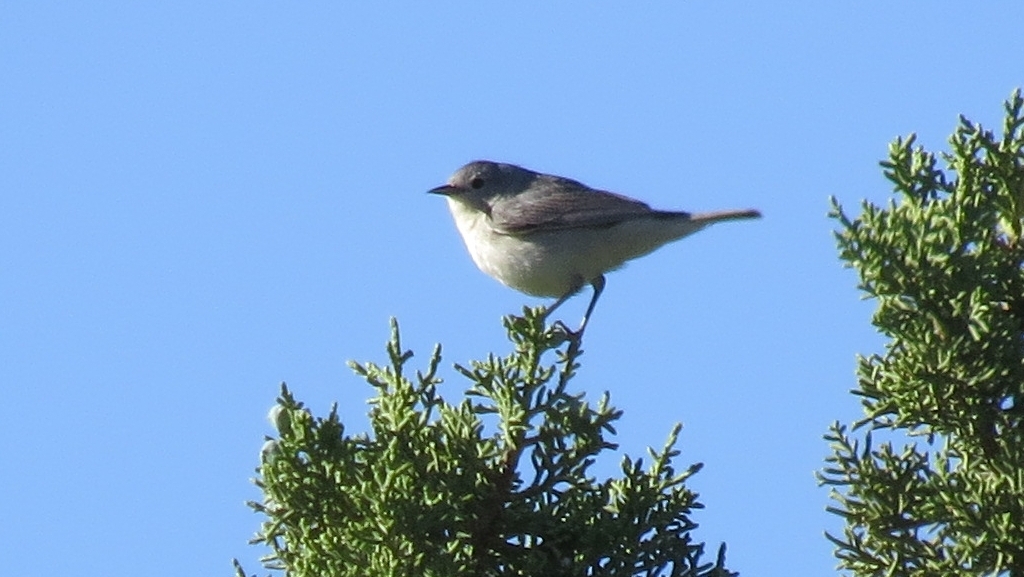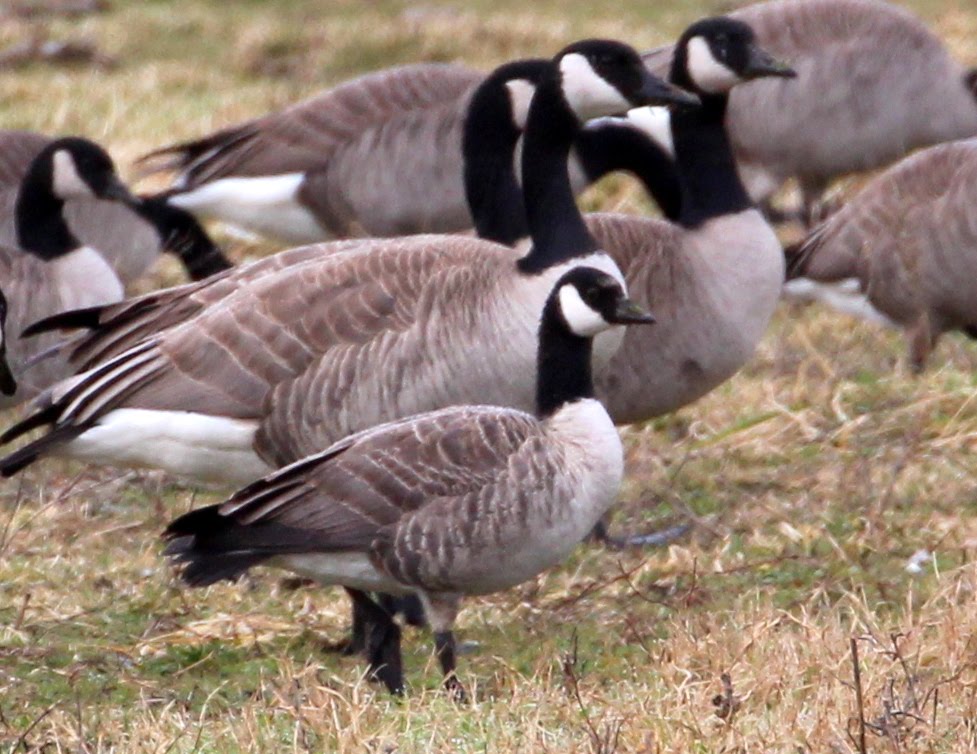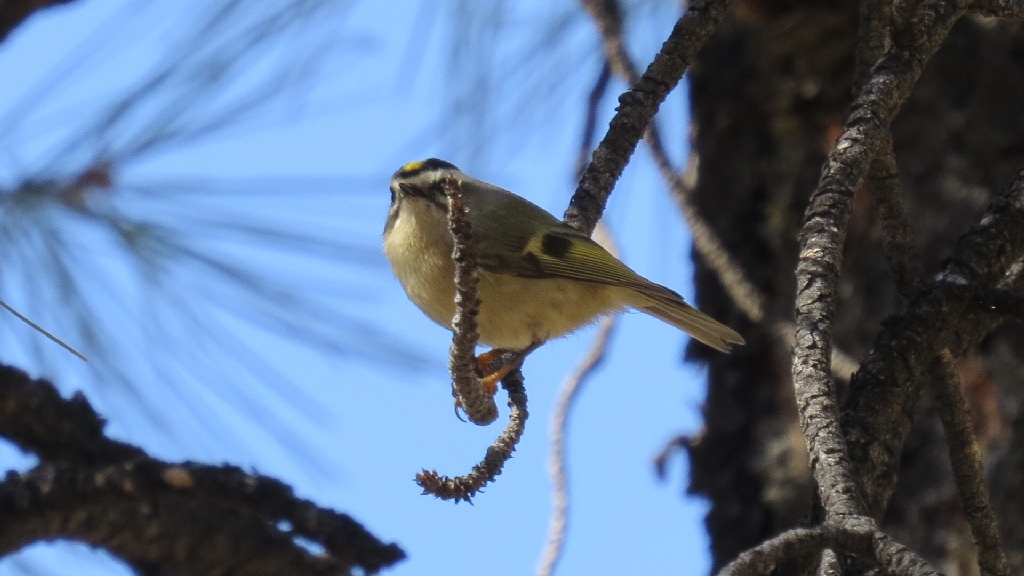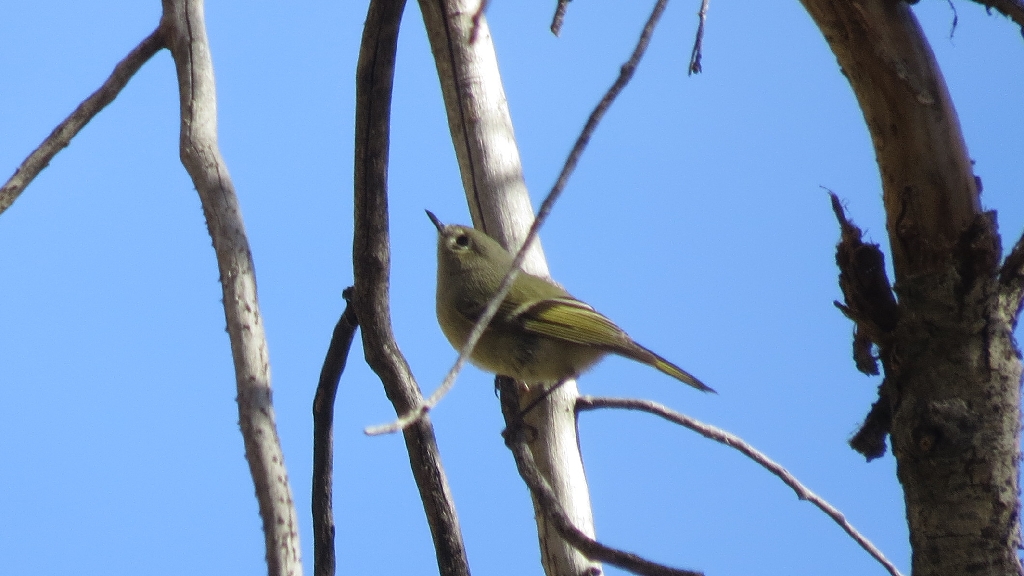
Janie Stewart and I were surrounded by hundreds of Ruby-crowned Kinglets on the 100-yard stretch of the Granite Basin Lake trail. As most of you will admit, Ruby-crowned Kinglets have a very high cuteness factor. In fact, 65% of Audubon members will exclaim some variation of “Oh, how cute!” when they see one. The other 35% will grunt so they don’t sound like a wuss. Jubei, my white Jackahuahua birding dog, was naturally unimpressed, having a high cuteness factor of his own.

The first time I correctly identified the Ruby-crowned Kinglet was at Montezuma Well five years ago. The bird was hopping from branch to twig in a small mesquite bush, adequately amped by the three cups of espresso the species is required to drink for breakfast. I was expertly armed with my 1977 Audubon Society Field Guide and my 7×35 binoculars (complete with loose prism) acquired in junior high school with my paper route money. I was looking for a Copper-tailed Trogon or a Rufus-sided Towhee without much luck. When the Kinglet flashed red in its crown, that’s when I became acutely aware of its high cuteness factor.
The birding greats, despite all their wisdom, seem to have overlooked this one distinctly useful criterion when they laid down their bird identification rubric. The cuteness factor is not mentioned in the 1977 Audubon Field Guide, nor even discussed by David Allen Sibley, but believe me it’s a thing. The Ruby-crowned Kinglet has a high cuteness factor. The Hutton’s Vireo, a virtually identically marked bird, not so much.

Let’s take the Lucy’s Warbler as another example. By all objective observations, the Lucy’s Warbler is a plain, dull, boring gray bird—yet it has a high cuteness factor that is Disneyesque. Its dark eye is surrounded by a white eye-ring that is so close in color to the light gray supercilum and auriculars (what I call the bird’s face) that the eye seems to pop with prominence. If you were to add false eyelashes, the Lucy’s Warbler would be ready to wash Snow White’s dishes, whistling while it works.

Finding a Cackling Goose in a flock of Canadian Geese can be a nightmarish version of Where’s Waldo if you simply try to find a bird that is smaller than the rest of the flock. After all, Canadian Geese vary in size, with the northern breeding geese smaller, approaching the size of the Cackling Goose. By far, the easiest way to tell them apart is by cuteness factor. The Cackling Goose has a shorter neck, shorter bill, and all-around more dainty facial features. In a nutshell, it is easier to look for the cute goose.

Janie, Jubei, and I were stuck in our own rather bizarre game of Where’s Waldo on the Granite Basin Lake trail. We were looking for a Golden-crowned Kinglet, which is slightly less cute than a Ruby-crowned Kinglet. Believe me, looking for a slightly less cute bird is much harder than finding the single cute goose in a flock. And if you’ve ever watched a Ruby-crowned Kinglet, you’ll confirm they move with caffeinated purpose, flittering fro and non to the beat of a three-year-old with a pan and a spoon. Getting your binoculars on one can be a challenge.

And no two birds follow the same path or flit to the same beat. Put six or eight Kinglets in a single bush and you have birder agitation, because birders train themselves to notice twitterpation in the periphery of their vision. Fill every bush along a 100-yard trail with six to eight Kinglets and you have nothing short of chaos and pandemonium. It’s like Harry Potter seeking the magic flying key in the tornado of flying keys, only the Kinglets do not fly in a circle. They move in zigzags, stopping and starting. No sooner than you focus your binoculars on one bird, five more capture your attention. I had to remind myself not to clench my teeth. Once when Janie spoke, I reflexively jumped up into a low tree.
Janie, Jubei and I did find the lone Golden-crowned Kinglet. All it cost me personally was half a bottle of Xanax afterward.
Title photo by Chip Engelmann ( Note: It took two days and over 200 hundred shots to get 3 decent shots of a Ruby-crowned Kinglet. I told Sam Hough this and he pointed his camera at a tree. “Like this?” he said. “Click-click-click-click-click.” Just that fast he had 5 good shots of a Ruby-crowned Kinglet. Sam can be a show-off.)

Chip I didn’t know – love your style of writing and your humorous analogies! I had a recent experience with a caffeinated zip-zagging Ruby-crowned kinglet in my little postage stamp garden in Nepenthe. I kept hearing a sharp wren-like tsst and the second day it began to dawn on me that it was not a wren as my little wren practically comes to me and this one I couldn’t get a bead on it was so busy flitting about. Got out my docs and camera and set to wait – nothing. Finally going inside and dropping my equipment in disgust, I look out the patio door and there is Mr. Kinglet with his crown all pointy sitting right in open view on the fence.
I can attest to the fact that Ruby-crowned Kinglets do not cooperate with attempts
Chip
It was a birding day to remember for sure! I don’t think we will see that many Ruby-crowned Kinglets again at one time and getting to see our target bird the Golden-crowned Kinglet was a treat! We were all in the right place at the right time. God’s perfect creation just for us to see!
People probably think I’m exaggerating about the number of Ruby-crowned Kinglets. It was amazing!
Chip
Cuteness factor – it’s a thing! High in my list is Junioer Titmouse. Thanks for sharing a very enjoyable read.
Yes! And Briddled Titmouse as well.
Chip
Hi, Chip: We met briefly on a field trip you were leading. I very much like the photos and your blog. My focus is a bit more north – but I just also blogged about the Ruby-crowned Kinglet. You can read it here: http://www.backyardbirdingaz.com. Hope to run into you again – perhaps at the Verde Valley Birding and Nature Festival in 2020.